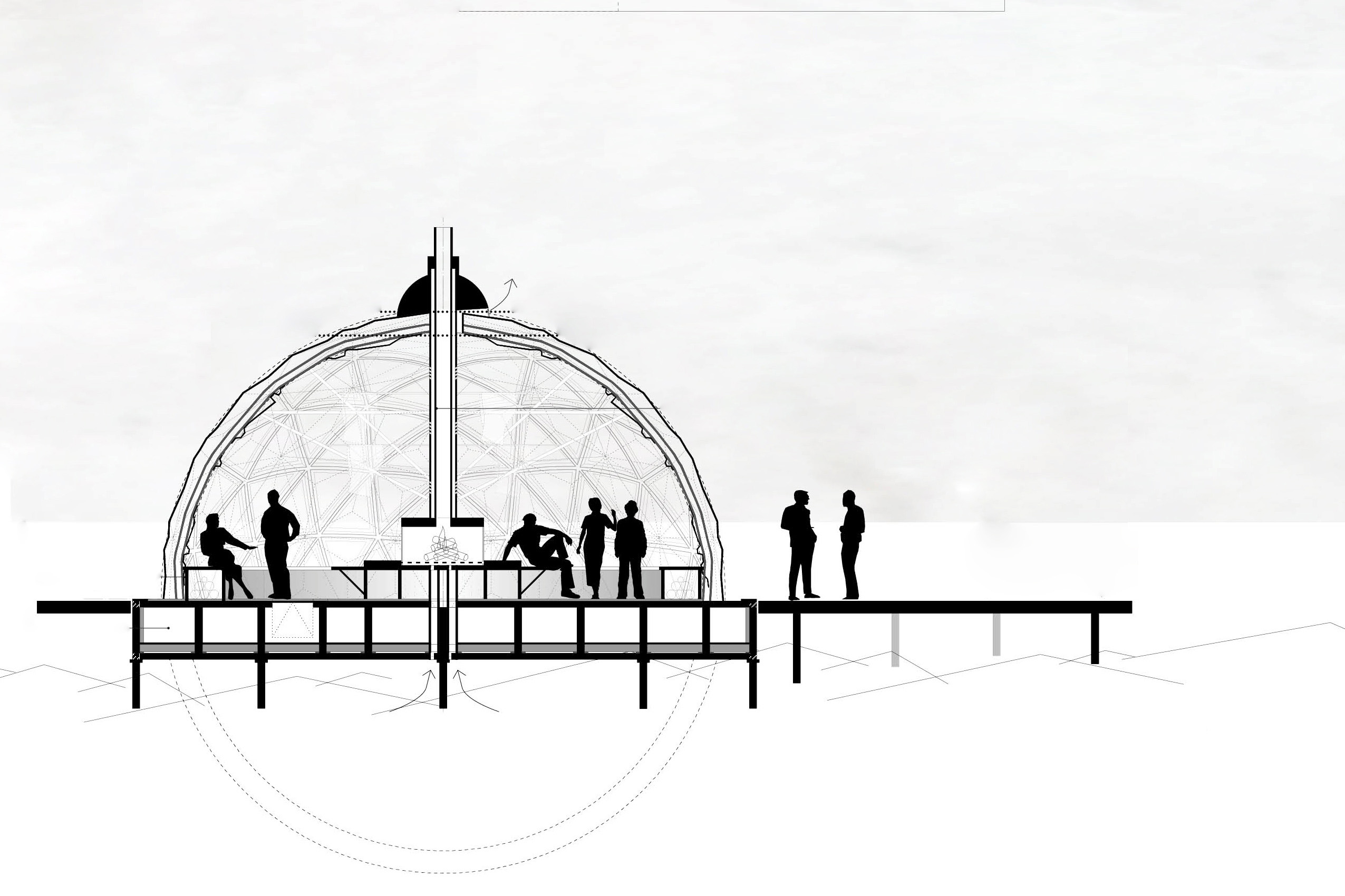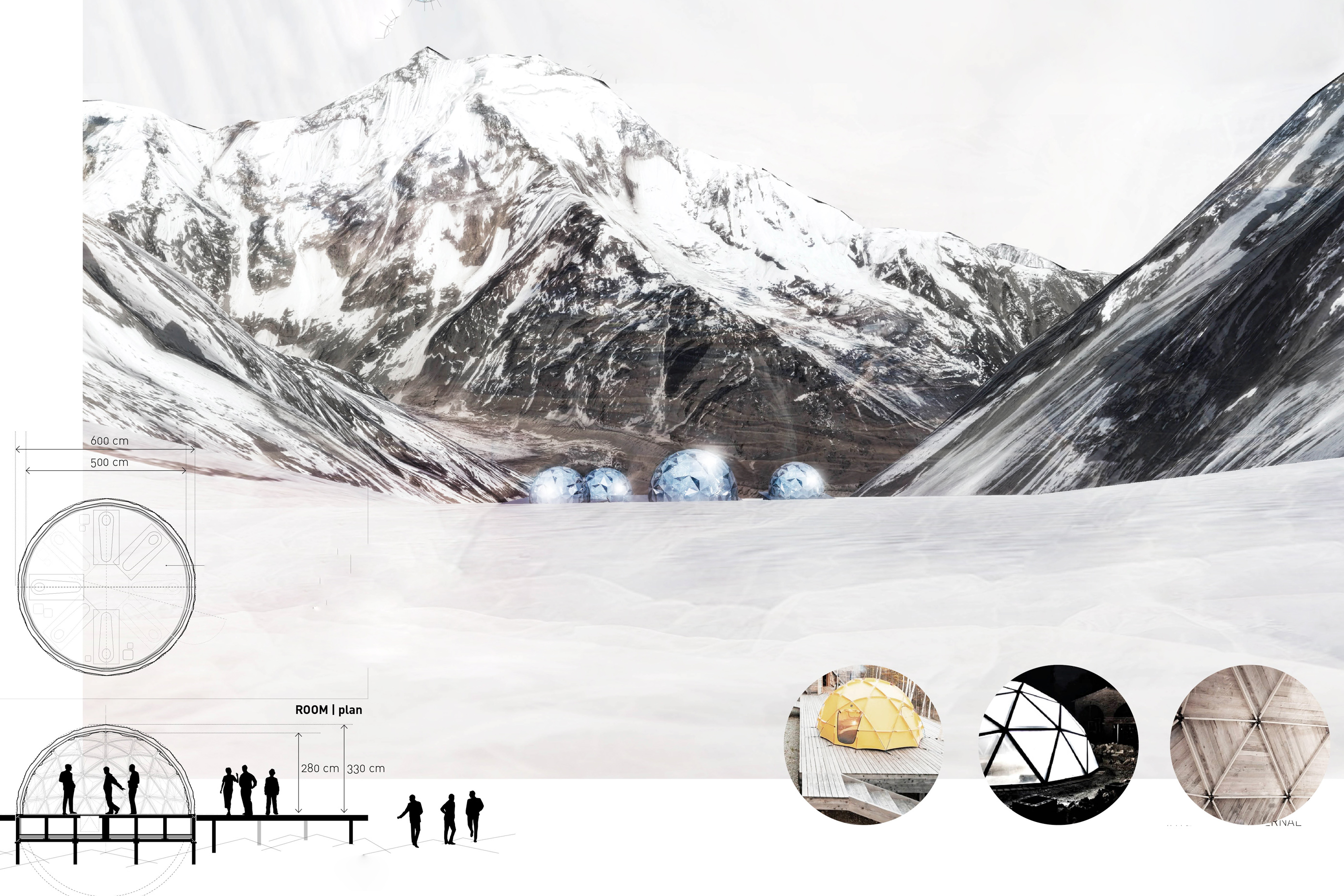
Ms. Gottardo chose a geodesic dome structure for her project. A geodesic dome is a hemispherical thin-shell structure based on a geodesic polyhedron. The triangular elements of the dome are structurally rigid and distribute the structural stress throughout the structure, making geodesic domes able to withstand very heavy loads for their size.
Moreover, a dome is the geometric shape that encloses the largest amount of volume with the least amount of surface area. This generates a greater saving of building material than any other structure with a different form.
BuildWind performed simulations of the aerodynamics and heat transfer in order to assess the technical feasibility of the proposed design project.
The dome, being spherical, has about 25% less surface area per volume enclosed than any other shape. Less surface area reduces heat losses compared to conventional structures. Therefore, less energy is required for heating.
The spherical shape of the dome, with no stagnant corners, resulted in highly efficient and effective natural air circulation, maintaining even temperatures more easily than other shapes.
Simulations proved that the aerodynamic shape of the geodesic dome offers an excellent protection against winds by minimizing the pressure forces acting on the building surface. It also makes that cold air flow around the dome instead of forcing its way into the interior.


